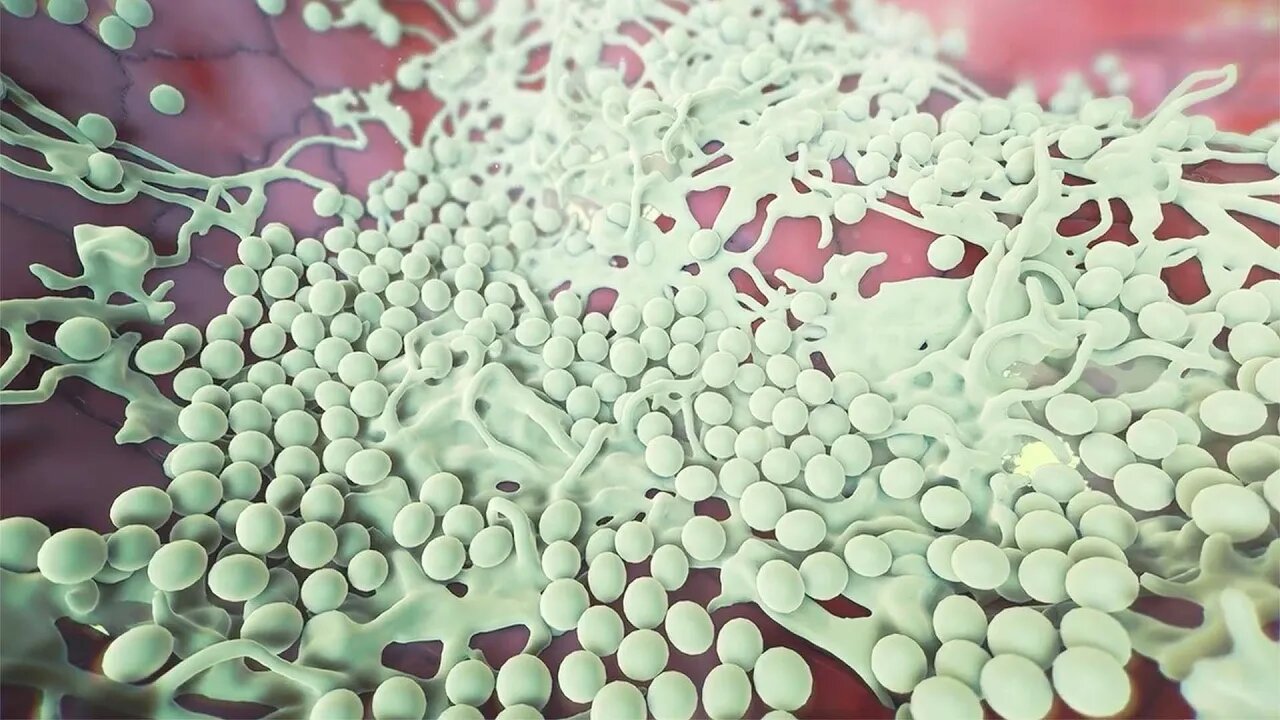Premium Only Content

Treating and Preventing Vaginal Yeast Infections
MEDICAL ANIMATION TRANSCRIPT: A vaginal yeast infection is a common condition where too much yeast grows in a woman's vagina. Other names for it are vulvovaginal candidiasis and candida vulvovaginitis. Yeast is a type of fungus which is a plant-like organism. The type of yeast that usually causes the infection is called candida albicans. Your vagina is the passage from the uterus to the outside of your body. The surface inside your vagina normally contains small amounts of this yeast, which usually doesn't cause any problems. Other germs, such as the healthy bacterium Lactobacillus, also live in the vagina with Candida. They keep each other in balance. Sometimes conditions change in the vagina that make the yeast grow out of control. When this happens, yeast cells invade the lining of your vagina, called mucosal epithelium. As the yeast grows and damages your cells, it causes immune cells to enter the tissue. This inflames and damages the tissue as your immune cells try to clear the infection. Unfortunately, yeast cells can avoid immune destruction by killing immune cells. Or, yeast cells may grow too large for immune cells to destroy them. This allows the yeast to grow and spread, forming a layer called a biofilm in your vagina. It's not always clear why a person gets a yeast infection. But, you're more likely to get a yeast infection if you are pregnant, have diabetes. wash the inside of your vagina, also known as douching, have a weakened immune system, take birth control pills, or have taken antibiotics or steroid drugs. The most common symptom of a yeast infection is an extreme itchy feeling in your vagina and your vulva, which is the area around the entrance to your vagina. Other symptoms may include redness, burning and swelling in your vagina or vulva, pain during urination or sex, and a thick white odorless discharge from your vagina. You can treat a vaginal yeast infection with antifungal medicines. These medicines may be creams or suppositories that you apply in your vagina. Or, they may be pills you take by mouth. It's important to use an antifungal medication for as long as the directions tell you to. Don't stop using them early, even if your symptoms go away. Some of the ways you can help prevent a vaginal yeast infection include only washing your vulva, not inside your vagina, and not using douches or hygiene sprays. Keeping the genital area clean and dry. Not wearing tight underwear or pants. Wearing underwear with a cotton crotch. Always wiping front to back after using the toilet. Cleaning your vulva after sex. And, keeping your blood sugar under control if you have diabetes. Also, take antibiotics for other infections only as prescribed. Antibiotics may kill healthy bacteria that keep yeast in check, which can lead to a yeast infection. To find out more about vaginal yeast infections, talk to your healthcare practitioner.
#VaginalYeastInfection #VulvovaginalCandidiasis #CandidaVulvovaginitis
ANH23271
-
 LIVE
LIVE
JustPearlyThings
59 minutes agoHigh Value Men Are Happy With Wives That Are Mid (Call-in Show) | Pearl Daily
535 watching -
 LIVE
LIVE
megimu32
1 hour agoON THE SUBJECT: Mixtapes, Mosh Pits & Mistakes: How 90s Rock Raised Us
265 watching -
 58:57
58:57
Donald Trump Jr.
4 hours agoAmerica First, Always. Interviews with Ned Ryun & Kenny Cody | TRIGGERED Ep.235
72K59 -
 52:11
52:11
BonginoReport
4 hours agoDHS Sec Noem ROBBED By Masked Man on Easter - Nightly Scroll w/ Hayley Caronia (Ep.31)
46.8K55 -
 1:13:46
1:13:46
Kim Iversen
4 hours agoKlaus Schwab Steps Down—But the WEF Agenda Marches On
67.7K76 -
 1:24:34
1:24:34
vivafrei
6 hours agoVan Hollen's Tax-Payer Funded Vacay! Canada Liberals are Absolutely INSANE! Hegseth Hit Piece & MORE
80.7K27 -
 55:55
55:55
LFA TV
1 day agoEurope’s Religious Revival | TRUMPET DAILY 4.21.25 7PM
6.61K -
 LIVE
LIVE
Quite Frankly
6 hours ago"Death of Pope Francis, Klaus Retires, Easter Review" 4/21/25
1,051 watching -
 LIVE
LIVE
2 MIKES LIVE
3 hours ago2 MIKES LIVE #208 Deep Dive Monday!
218 watching -
 29:31
29:31
Kimberly Guilfoyle
4 hours agoThe Great American Comeback, Live with Nick Adams | Ep215
57.8K15